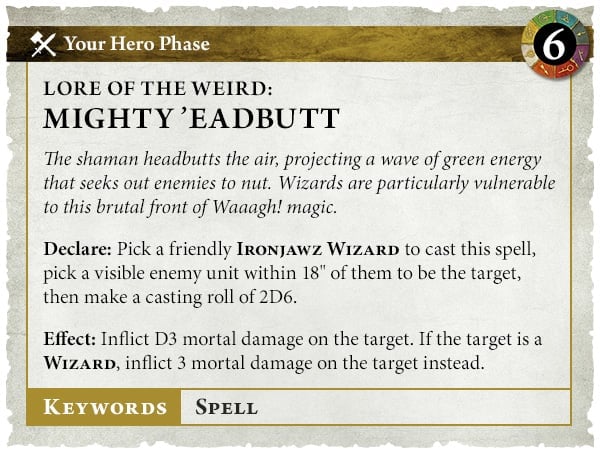Games Workshop has previewed the new Age of Sigmar spell and magic system for the game’s fourth edition, as well as details for how priests will invoke the favor of their gods, and the broad strokes of how endless spells and invocations will work. Here’s what’s changing.
Fans already know that the specific spells and prayers available to Age of Sigmar armies are likely to change in the new edition, after GW confirmed that all current Battletomes would be retired. In a Warhammer Community post on Friday, Games Workshop revealed changes to the systems underlying those magical abilities coming in AoS 4th edition.
Age of Sigmar spell system
The new Age of Sigmar spell system keeps many features from the current version of the game. To cast a spell, a wizard rolls 2D6 and attempts to equal or exceed the spell’s casting value. A casting roll of double one is a miscast, causing the spell to fail and inflicting D3 mortal damage on the caster.
Opposing wizards can attempt to unbind a successfully cast spell before it resolves by rolling 2D6. If they can beat the casting roll, the spell is unbound and has no effect. This is all pretty much the same from previous editions of AoS. However, which spells a wizard can cast, and how many casting, unbinding, and banishment attempts they can make, have changed.
When building your army, you get to choose a spell lore for your army. All wizards in your force get access to all of the spells from the lore. Normally a spell can only be cast by one wizard each turn, but spells with the Unlimited special rule can be cast by more than one wizard. A wizard can’t cast the same spell more than once per turn, but can attempt to unbind more than one spell.
Each wizard has a power level, noted in their keywords in brackets as WIZARD (X). Each wizard can attempt to cast spells, unbind spells, or banish manifestations up to their power level each phase.
Age of Sigmar priests and prayers system
In fourth edition Age of Sigmar priests are very different from Wizards – we’ll describe what they have in common first. Priests have a power level, like a wizard, which limits the number of prayer abilities they can use and manifestations they can attempt to banish, each phase. Just like with spells, you will pick a prayer lore for your army which all priests will have access to.
When a priest uses a prayer ability, they make a chanting roll by rolling D6. On a 2+ they gain that many ritual points: on a roll of one, they lose D3 ritual points. Each prayer has a chanting value which the priest must match with ritual points before it can be answered. Prayers have alternate, higher chanting values that empower them with additional effects.

It’s not clear from the Warhammer community article what happens to ritual points after a prayer is answered. We assume that the points are spent. But perhaps prayers can only be answered once per battle, which would incentivize players to hold out for the empowered version rather than unleashing it as soon as they meet the minimum chanting value.
Prayers can’t be unbound, and they can’t be miscast.
Age of Sigmar Endless Spells, Invocations, and Manifestations
Endless spells and invocations are now known as ‘manifestations’, powerful autonomous magical effects that can be summoned onto the battlefield. The latest WarCom article doesn’t explain how the process of manifestation works, but it does reveal that both wizards and priests can attempt to banish a manifestation within 30” by rolling 2D6 and attempting to equal or exceed the manifestation’s ‘Banishment value’.
Attempting to banish a manifestation counts against the number of priest or wizard actions a hero can take based on its power level. Just like spells and prayers, the manifestations available to your army may come from your army list, or from the manifestation lore that you select for the force.
To stay up to date with Age of Sigmar news, follow Wargamer on Google News.
Source: Wargamer




